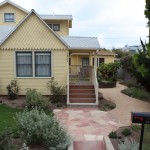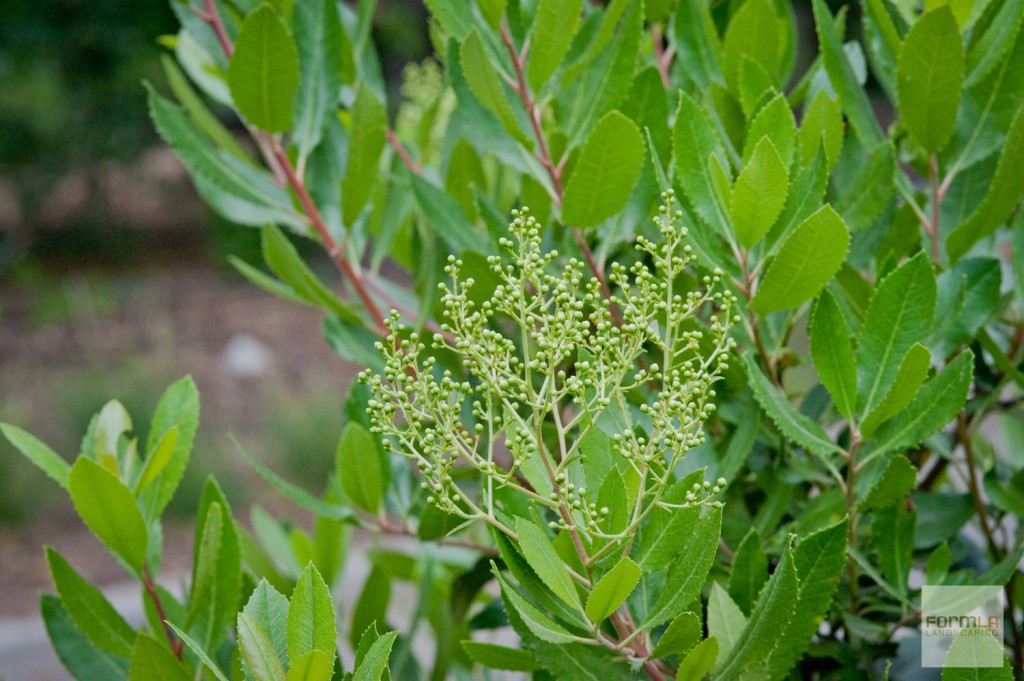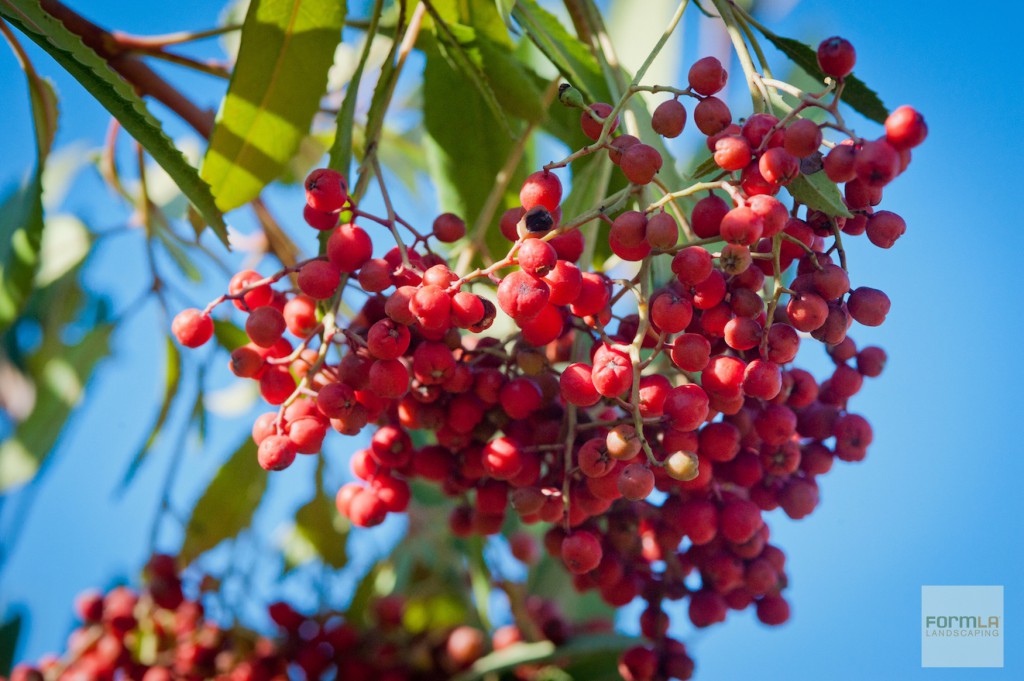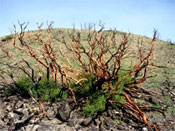Earning Water-Saving Rewards Can Be As Simple as 1, 2, 3
- This vividly green front lawn is a yarrow IdealMow lawn alternative that will erupt with white flowers, surrounding this sunny Santa Monica College with the look of snow. In addition to being featured on several years of the Theodore Payne Foundation Native Garden Tour, the Santa Monica Conservancy has recognized its historical relevance.
- Photo Credit: Las Pilitas Nursery
- Brachyschome
- Yarrow: Drought tolerant and fire retardant
- Salvia: Drought tolerant, brings birds and butterflies while repelling
FormLA owners Kirk Aoyagi, a certified water manager, and Cassy Aoyagi, a LEED accredited professional, recommend the following water-conservation strategies:
Use Smart Irrigation Strategies
Reducing irrigation system leaks and over-watering can make a big difference in outdoor water consumption rates. Strategies for improving irrigation include:
- Monitoring and maintaining existing systems, reducing water waste (and fines) associated with leaks
- Watering at night or early in the morning to reduce evaporation and maximize root-zone absorption
- Retrofitting older systems with weather-based controllers, rotators, and/or low flow irrigation devices
- Avoiding hosing of patios – sweep instead
- Creating enough irrigation system zones to service each plant community and microclimate effectively
- Installing weather-based controllers to ensure appropriate watering for the time of year
- Installing low-flow (drip) irrigation systems to maximize effective root zone watering and reduce evaporation
- Installing sub-meters to save money on sewer rates
Enjoy a Lawn Alternative
Lawn-like alternatives that provide all the beauty and utility of a traditional lawn while requiring less maintenance and less water to thrive include:
- IdealMow™ lawn alternatives, which look similar to traditional lawns and thrive on approximately 30-60 percent less water
- Ground cover and joint lawn substitutes, which create visual interest with juxtaposing colors and textures
- NoMow™ lawn substitutes that have a natural, meadow-like appearance thrive on 30-60 percent less water
Plant Native or Climate Compatible Foliage
Native gardens can be the most vibrant, lush and fragrant outdoor spaces in a community, particularly in low water years. We recommend:
- Plant small natives, which require less water to become established
- Mix plants from the world’s 5 compatible climate zones to create a look compatible with established architecture
- Visit the City of Santa Monica’s Garden/Garden to compare a vibrant native garden with a high-water consumption traditional garden
- Place plants with similar water needs in zones to facilitate effective irrigation
- Visit the La Cañada public library to see, smell and touch examples of climate-compatible foliage
Earn Rewards
State and local rebates and grants encourage water-conservation and other sustainable landscaping practices. Activities eligible for rebates in many Los Angeles communities include:
- Retrofitting spray nozzle sprinkler heads with pop-up spray heads
- Replacing large rotary sprinklers with high-efficiency nozzle retrofits
- Working with a certified sustainable landscape designer
- Using climate-friendly plant materials
- Installing weather-based irrigation controllers
- Adding rain barrels and cisterns

















